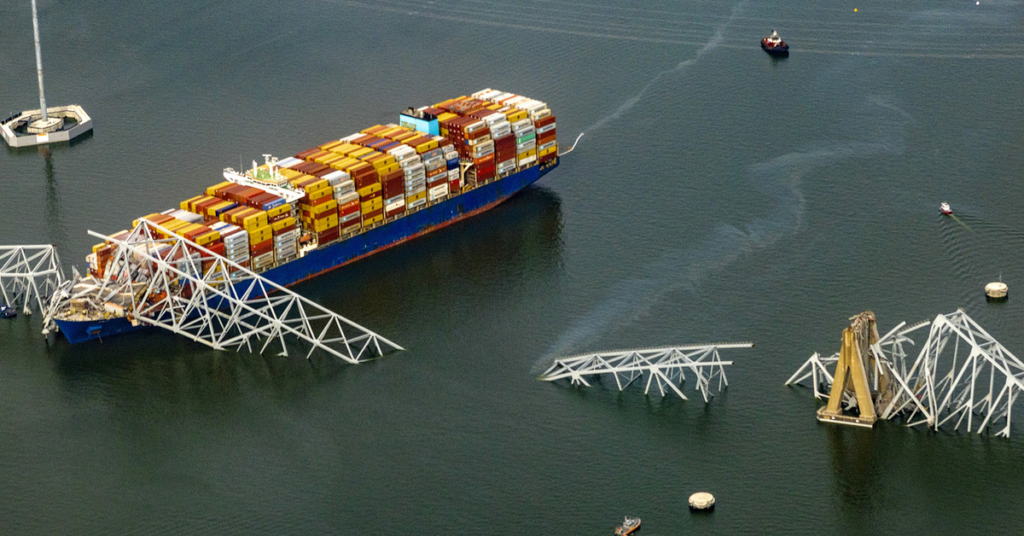The shocking collapse of Baltimore’s Francis Scott Key Bridge after it was hit by a cargo ship early Tuesday morning has the region reeling as authorities continue to search for survivors who may have fallen into the Patapsco River.
Thus far, two people who were working on the bridge have been rescued and six are presumed dead by their employer, Brawner Builders, given the temperature of the water and the time that has passed since the accident, the Associated Press reported Tuesday evening. Sonar, robots, and human divers were among the resources being deployed in the search, which was continuing in the late afternoon.
“This is an unthinkable tragedy,” Baltimore Mayor Brandon Scott said at a press conference on Tuesday morning.
The collapse of the bridge will also affect transportation in the region — and potentially global trade.
Used by 31,000 vehicles each day, the Key Bridge is a central conduit for traffic in the area. The incident also comes as the global shipping industry is facing several other challenges, including a record-breaking drought in Panama and Houthi strikes on ships in the Red Sea. Due to closures at the Port of Baltimore — one of the busiest in the country, especially for foreign cargo — logistics and shipping companies will likely need to reroute more key deliveries.
Authorities have acknowledged these concerns — and the challenges they pose — but emphasized that they’re secondary to the urgent search effort that’s still underway.
Why did the Baltimore bridge collapse? What happened with the ship?
The incident took place around 1:30 am ET Tuesday when a large cargo ship called the Dali abruptly lost power and collided with a support column on the Key Bridge, a 1.6-mile structure that stretches across the Patapsco River.
After the ship — which holds a volume of 95,000 gross tons — hit the column, video shows parts of the four-lane bridge crumbling rapidly and collapsing into the water.
Shortly before the…
Read the full article here





